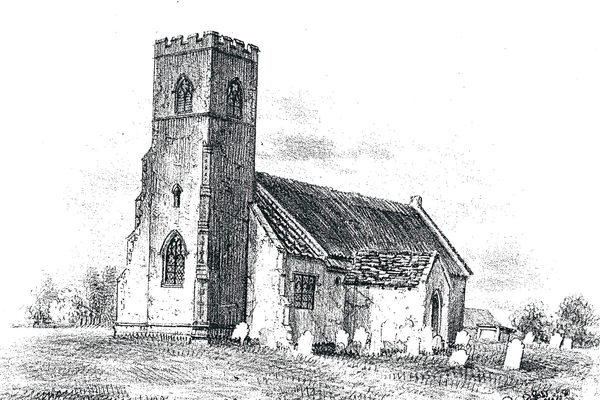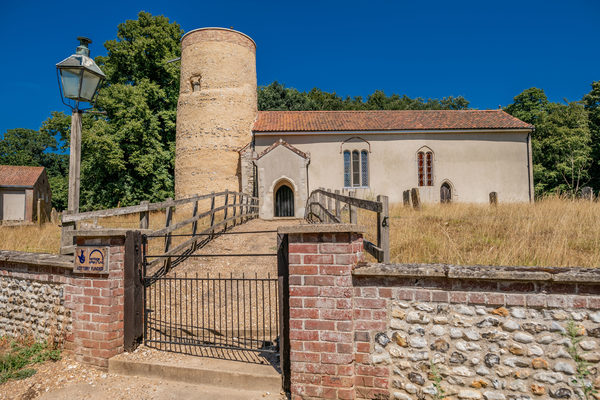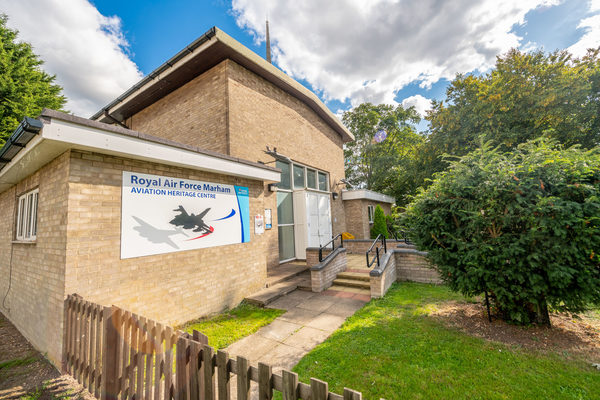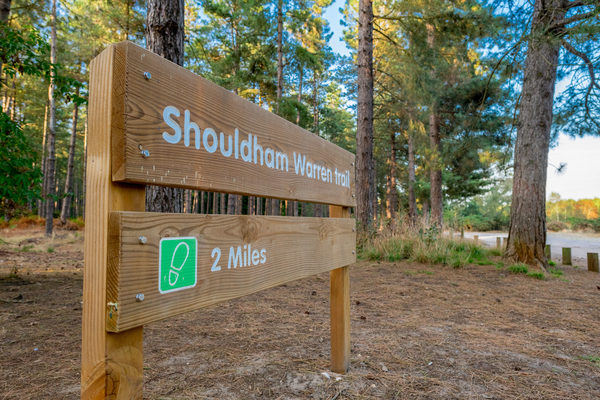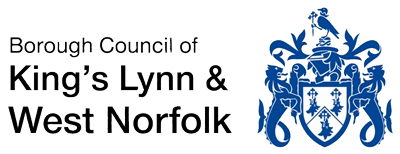From the outside this church with its long continuous roof poses a puzzle which is more easily solved from the inside, where one can see the difference in the ceiling between nave and chancel and variations in the thickness of the walls. The oldest part is Norman with the very thick walls of that period, but the Norman church was quite short and is believed to have had a semi-circular apse for its chancel. There is a Norman window just W of the S door; it is quite small on the outside, but deeply splayed inside, and it is high enough to allow space for arcading as decoration of the nave walls. Such a small window could have taken parchment or oiled linen instead of glass in the Norman period. Two panels of this arcading survive which is just enough to indicate the lavish pattern and great style of this little Norman church. Note how each shaft has an astrugal (ring), cushion capital, chamfered abacus and is topped by intersected semi-circular arches. These are all particular Norman features. It must have been a tiny community then, but the parish also had a large Norman monastery about 14 miles SW of the church. Nothing but good was ever recorded of this monastery right up to the time of its dissolution in Henry VIII's reign.
Pentney is in the area known as "The Holy Valley of the Nar" because there were so many monasteries in it and the church tells something of the influence of the Augustinian canons here.
The Norman church was first extended by building a very long chancel instead of the apse. Four lancet windows on the N side show us that this was done in the Early English period. Next came the tower in the Decorated period which was later joined to the nave by a further extension of the church. The tower has diagonal buttresses on the outer corners and angle buttresses included in the nave walls. There are 4 fine gargoyles, and the one from the E face has been moved and reset above the W window for decoration. There is one bell inscribed "John Lloyd Esquire, Churchwarden 1821". A tablet commemorating John Lloyds will be found at the E end. A perpendicular period window was added to the tower and square headed windows to the nave. Notice a fine pair of headstops on the window E of the porch; the man there has a very prominent nose. The outside walls deserve a close study. The main ingredient is carstone that came from a quarry in the nearby parish of West Bilney, but the chancel walls contain a lot of cut stone reused. Many pieces of round shafting and half-round pieces can be found. A putlog hole for scaffolding has been made from Norman stones. There was a benatura outside the N door. The thatched roof was replaced by slates in the Victorian restoration and the walls were raised by a few courses of carstone with galleting along the whole length of the church. It is a pity that so much of the nave was plastered exter-nally, but it may have always been kept plastered as some flint churches were.
There is an Early English priest's door with headstops to its high pointed hoodmould. Just to the right of this doorway is a good place to see Norman shafting reused in the wall. The E window is fine with its late Geometrical tracery of the period 1250-1320. It was reglazed in 1884 with a crucifixion scene. Note the gorgeous robes. Mary has a jewelled border to her robe. The young man on the extreme left is Charles Thackeray in whose memory the glass was made; he died in the East Indies. Behind the cross will be seen fine buildings of Jerusalem, and in the foreground the flowers of the field. The chancel piscina has been cut off and only part of the flower drain is visible, but enough to show that it was exceptionally large and it had a very large niche around it. The sedilia is quite plain. The window behind the priest's reading desk has a transome as if the lower part of it was intended as a 'low-side window'. The communion table is a nice one and has been brought forward from the E wall, and the more modern reredos put across the N doorway as a separate feature. The pulpit has quaint candlesticks which are adjustable for height. The lectern has a revolving top that is also adjustable for height by a substantial wooden stem with a wooden screw thread. A pretty Norman shaft in the reveal of the Perp window near the pulpit makes a most attractive feature. It could have been part of an angle piscina reset but with so much Norman stone work reused in this church it could have been derived from almost anything. The font is plain, but no doubt an early one. It has been repaired with stone in 3 places where there were iron fittings for fixing and locking the font cover in medieval times. On the N wall hang pictures of the Pentney brooches. Six silver disc brooches were dug up in this churchyard in 1977, and are now in the British Museum. At the time they were mistaken for decorations off a horse harness and were put in a box in the vestry where they remained until 1981 when the new rector sent them to the museum for examination. There followed a careful archaeological excavation which revealed a large Saxon ditch with other 9th or 10th century material in it. It is thought that these brooches were deliberately buried in the ground in Saxon times. The style of the animal design is typical of that period, and these brooches are probably 9th century work which is particularly rare. They were declared 'treasure trove' and the church was restored with money from that source. A brass on the nave floor has 2 shields:- 1. Chevron between 3 lion heads Wyndham. 2. Three eagles displayed - Clare of Stokesby. It declares a good testimony to Mrs Susan Wyndham, saying she was frequent in prayer and no doubt obtained the crown of immortality. She died in 1620, aged 44. A brass tablet on the wall of the chancel tells of Thomas Paul, who was churchwarden here for 65 years'. He died in 1907, aged 88. The classical style wall monument is dated 1805 for the widow of the Rev. N. Lancaster, and exhibits the name of the local stonemason, Eldridge of Lynn.
